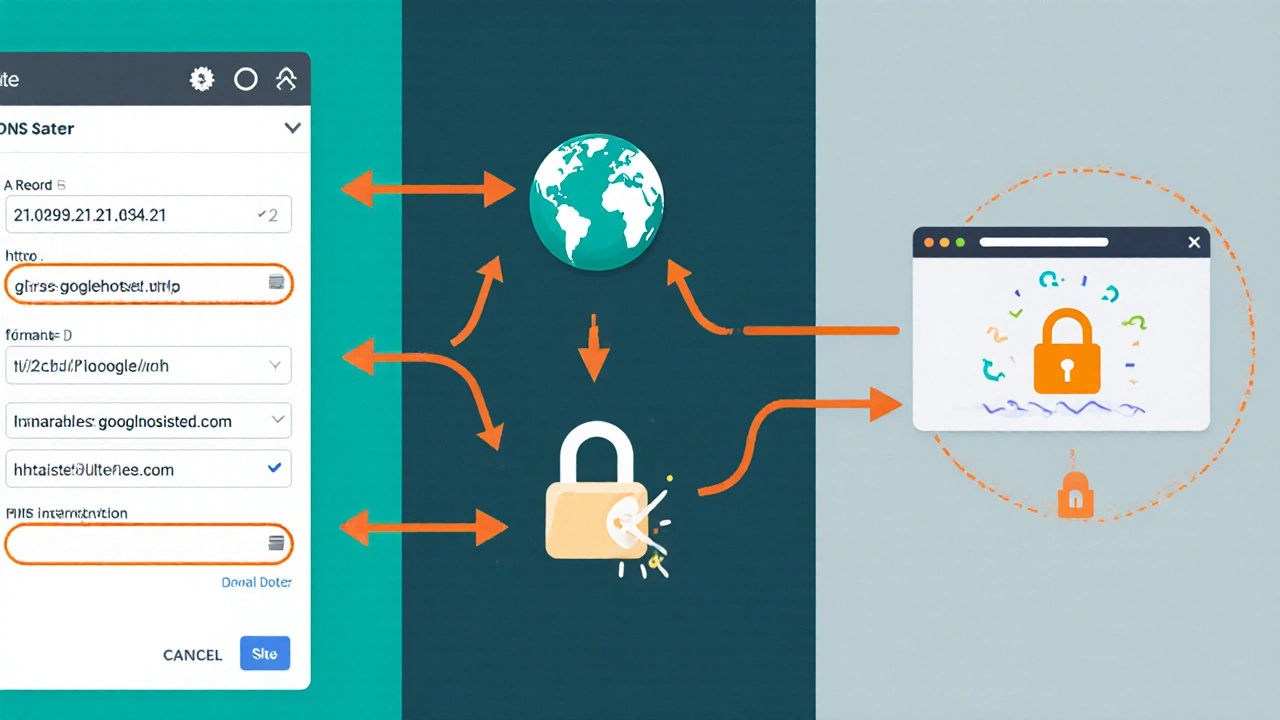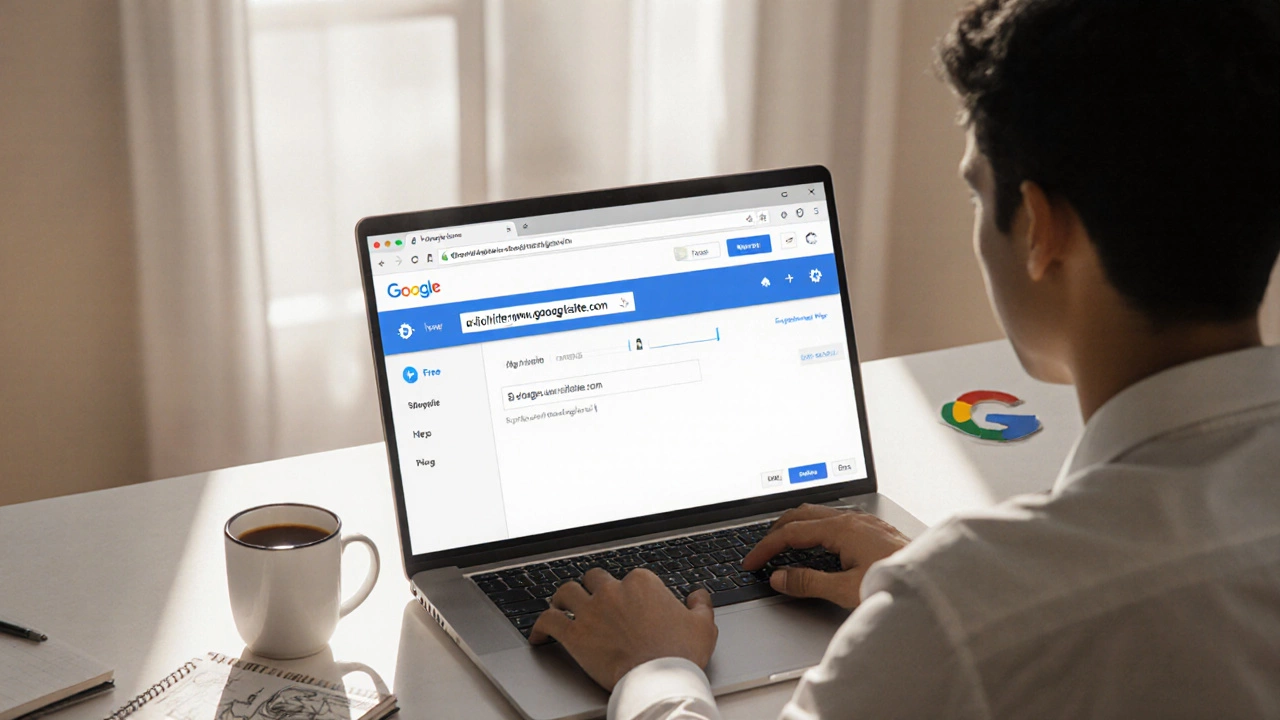Google Sites Domain Comparison Tool
Free Subdomain
*.googlesite.com
Free
Custom Domain
yourbrand.com
$12-$20/year
Comparison Details
Free Subdomain Benefits:
- No extra cost – stays within free tier
- Instant SSL – automatic HTTPS
- Zero maintenance – no renewal needed
- Easy setup – publish and you're done
Drawbacks:
- Shows Google branding in URL
- Search engines treat as separate site
- Limited brand control
- May appear less professional
Custom Domain Benefits:
- Full brand control and credibility
- Better SEO performance
- Professional appearance
- HTTPS automatically provisioned
Requirements:
- Own the domain (costs $12-$20/year)
- Access to DNS settings
- Google Sites site ownership
- Optional Google Workspace for email
Setup Steps:
- Add A records pointing to Google IPs
- Create CNAME record for www
- Verify domain in Google Sites
- Wait for DNS propagation (up to 24 hours)
Domain Cost Calculator
Workspace (for email) costs $6/user/month.
Key Takeaways
- Google Sites gives you a free
*.googlesite.comsubdomain, not a full custom domain. - Connecting a custom domain costs the price of the domain itself (usually $12‑$20/year) and a Google Workspace account if you want a professional email.
- The setup only involves a few DNS records - most registrars, including Google Domains, have a one‑click integration.
- All Google Sites automatically receive an SSL certificate, so HTTPS is on by default for both subdomains and custom domains.
- If you need a truly free custom domain, consider alternatives like Freenom or a GitHub Pages subdomain, but they come with limits.
When you start a site on Google Sites is a drag‑and‑drop website builder that lives inside Google Workspace, the first question is whether you get a free domain Google Sites. The short answer: you get a free subdomain that looks like yourname.googlesite.com. If you want yourname.com, you’ll need to buy it elsewhere and point it at your site.
How Google Sites Handles Domains
Google Sites was designed for quick internal projects, team pages, or simple public sites. By default it creates a URL in the following format:
https://sites.google.com/view/your‑site‑name
When you publish the site, Google automatically provides a free subdomain that ends with .googlesite.com. This subdomain is completely free, requires no extra configuration, and works with HTTPS out of the box.
What you don’t get for free is a custom top‑level domain (TLD) like .com or .org. To attach a custom domain, you must own the domain already and then tell Google Sites where to find it.
Getting a Free Subdomain: What It Looks Like
If you create a site called MyPortfolio, Google will give you a URL such as:
https://myportfolio.googlesite.com
That address is permanent as long as the site exists. It’s suitable for personal projects, class assignments, or a quick landing page, but it’s not ideal for branding because the .googlesite.com suffix reveals the platform.
Advantages of the free subdomain:
- No extra cost - you stay within the free tier of Google Workspace.
- Instant SSL - Google automatically serves the site over HTTPS with a trusted certificate.
- Zero maintenance - you never have to renew a domain.
Drawbacks are mostly about perception and SEO. Search engines treat subdomains as separate sites, so ranking a .googlesite.com URL can be harder than a clean .com address.

Connecting a Custom Domain: Costs and Requirements
To use yourbrand.com with Google Sites you need three things:
- A domain name purchased from any registrar (Google Domains, Namecheap, GoDaddy, etc.).
- Access to the DNS settings for that domain.
- A Google Sites site that you own (any free Google account works, but a Google Workspace account gives you extra email tools).
The domain itself typically costs between $12 and $20 per year for a .com. Some registrars offer promos as low as $0.99 for the first year, but renewals go back to the standard price.
If you also want a professional email address ([email protected]), you’ll need a Google Workspace subscription, which starts at $6 per user per month in 2025. The email part isn’t required for the site to work, but many businesses bundle it together for a unified brand.
Step‑by‑Step: Pointing Your Domain to Google Sites
Below is the most common workflow when the domain is registered at Google Domains Google’s own domain registrar. The steps are almost identical for other registrars - you just need to locate the DNS management area.
- Log in to your Google Domains account and select the domain you want to use.
- Go to the DNS tab.
- Under Custom resource records, create two records:
- A record - Point to Google’s IP address
216.239.32.21. (Google actually provides four A records: 216.239.32.21, 216.239.34.21, 216.239.36.21, 216.239.38.21. Adding all four improves reliability.) - CNAME record - Set the sub‑domain
wwwtoghs.googlehosted.com.
- A record - Point to Google’s IP address
- Save the changes. DNS propagation can take anywhere from a few minutes to 24hours.
- Return to Google Sites. In the site editor, click Publish → Custom domain. Choose Use a domain you own and follow the prompts. Google will verify the DNS records automatically.
- Once verification passes, your site will be live at
https://www.yourbrand.com(or withoutwww, depending on how you configured the A records).
After the domain points to Google Sites, the platform automatically provisions an SSL certificate for the custom domain, so you get HTTPS without any extra steps.
Comparison: Free Subdomain vs. Custom Domain
| Aspect | Free Subdomain (*.googlesite.com) |
Custom Domain (yourbrand.com) |
|---|---|---|
| Cost | Free | Domain registration $12‑$20/yr + optional Workspace $6/mo per user |
| Brand perception | Shows Google branding, less professional | Full brand control, looks credible |
| SEO friendliness | Subdomain treated as separate site, slower ranking | Top‑level domain inherits backlink equity, easier ranking |
| SSL | Automatic HTTPS | Automatic HTTPS (Google provisions cert) |
| Setup complexity | Zero - publish and you’re done | Medium - edit DNS, verify ownership |
Why SSL Is Already Included
Google has a global network of edge servers that terminate TLS connections for every site hosted on its platform. Whether you use the free subdomain or a custom domain, Google automatically generates an SSL certificate issued by Google Trust Services. This means you never need to buy a third‑party certificate or renew it manually.

Alternatives If You Really Need a Free Custom Domain
Some people try to avoid the domain cost altogether. Here are two realistic options:
- Freenom offers free TLDs like
.tk,.ml,.ga,.cf, and.gq. You can register one for free and point it to Google Sites using the same DNS steps. The catch: free domains are often flagged as low‑trust by spam filters and can be reclaimed by Freenom without warning. - GitHub Pages provides a free
github.iosubdomain. If you’re comfortable with a tiny bit of HTML and want a custom look without any cost, you can host a static site there and link back to your Google Sites content.
Both work, but for a professional or business site, paying the modest yearly fee for a .com or .org domain is usually worth the credibility boost.
Common Pitfalls & How to Fix Them
- DNS propagation delay - If your custom domain shows a “site not found” error after setup, wait up to 24hours. You can use DNS Checker (no link required) to confirm the records have propagated.
- Mixed content warnings - Ensure any images or scripts you embed are served over HTTPS. Google Sites forces HTTPS, but external resources loaded over HTTP will trigger browser warnings.
- Forgot to set the
wwwCNAME - Some visitors typewww.yourbrand.comautomatically. Adding thewwwCNAME toghs.googlehosted.comcovers that case. - Domain expiration - Set auto‑renew in your registrar’s dashboard. Losing the domain also takes down your Google Site.
When to Choose Google Sites Over Other Builders
If your priority is speed, zero‑cost hosting, and deep integration with other Google services (Drive, Docs, Calendar), Google Sites is a solid choice. It shines for internal team portals, event landing pages, or simple portfolios.
However, when you need advanced design control, e‑commerce features, or a large library of plugins, platforms like WordPress, Wix, or Squarespace may be more appropriate, even if they cost more.
Frequently Asked Questions
Do I get a .com domain for free with Google Sites?
No. Google Sites only provides a free subdomain ending in .googlesite.com. To use a .com you must purchase the domain from a registrar and point it to your site.
Can I use a free domain from Freenom with Google Sites?
Yes, you can register a free .tk (or other Freenom TLD) and add the required A and CNAME records. Be aware that free domains often have low trust and may be reclaimed by the provider.
Will my custom domain have HTTPS automatically?
Yes. After the DNS records are verified, Google issues an SSL certificate for the custom domain, so the site is served over HTTPS without any extra steps.
Do I need a Google Workspace account to connect a custom domain?
No. A personal Google account can own a Google Site and link a custom domain. Workspace is only needed if you want business email or extra admin controls.
How long does DNS propagation take when I add the records?
Most changes propagate within a few minutes, but worst‑case can be up to 24hours depending on the registrar’s TTL settings.



